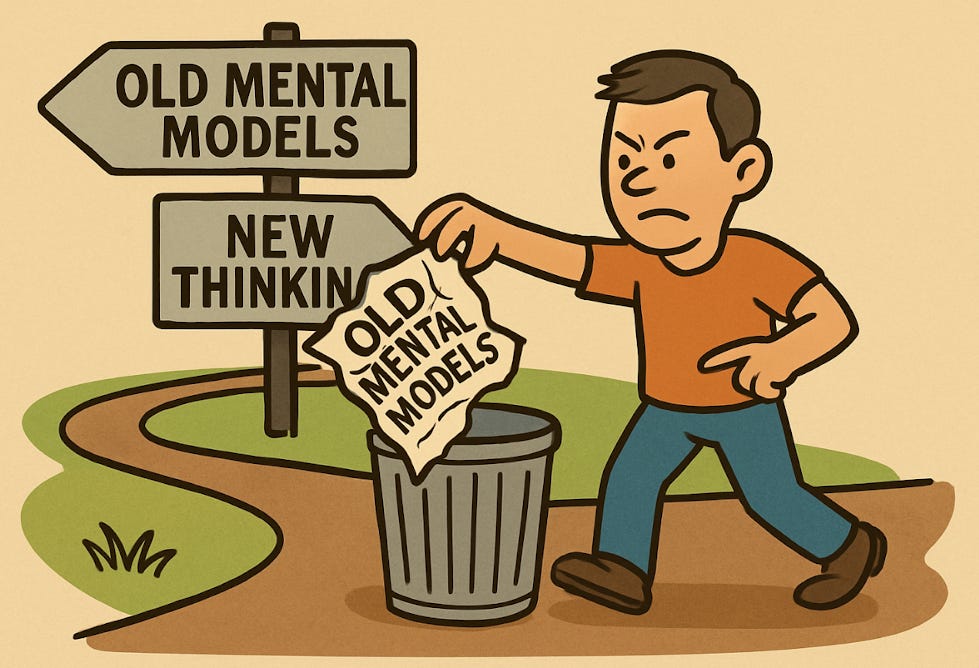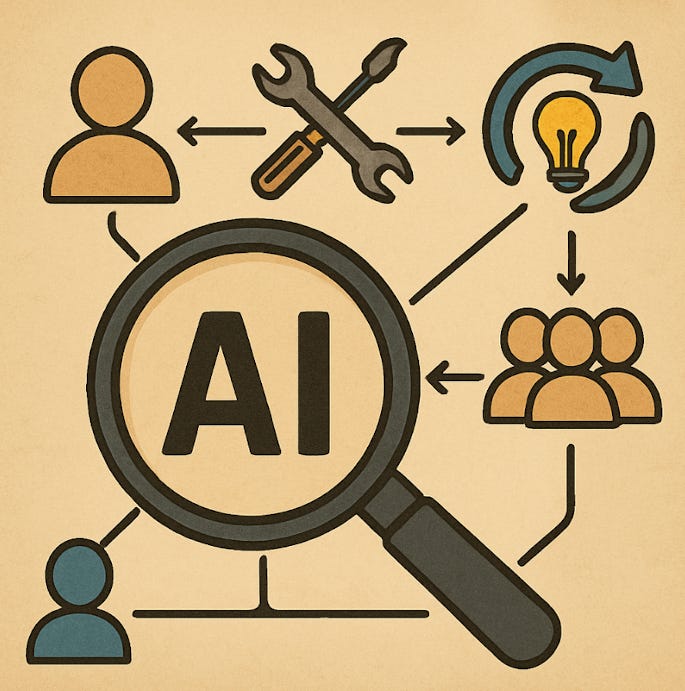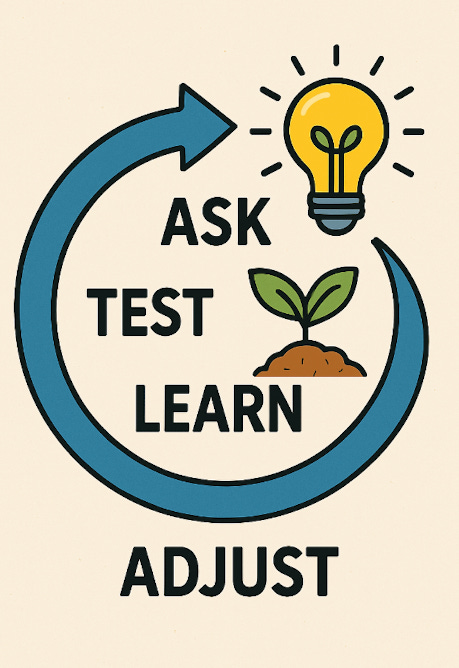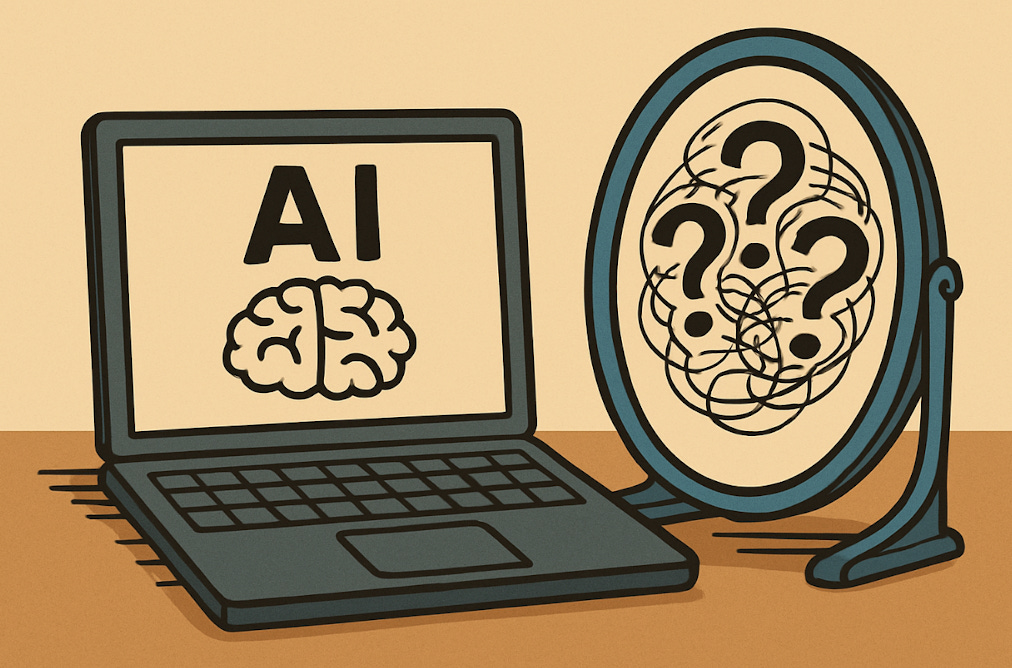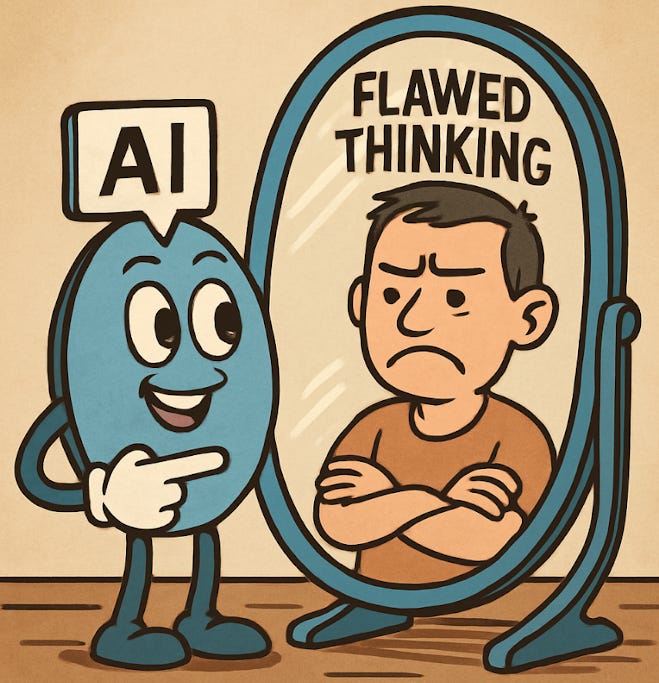Wayne Boatwright — Building Tools for the Uncharted
I don’t write to give you answers. I build instruments. Tools for thinking that help you navigate the places where old maps fail.
These tools are born from years spent dismantling and rebuilding my own mind, learning to separate the maps we inherit from the territory we actually live in. They’re not meant to be admired on a shelf. They’re meant to be used, tested against your own life, bent under pressure, and kept only if they hold.
Some are compasses for finding clarity when truth feels slippery. Some are knives for cutting through noise to what endures. All are built for the same purpose: to help you think in ways you didn’t know you could.
If you’ve felt the ground shift under your assumptions, you’re in the right place. The known world ends here. Pick up a tool. Let’s see what survives the journey.
When More Data Means Less Clarity
In a world flooded with dashboards, tools, alerts, and opinions, clarity isn’t increasing; it’s collapsing. Business owners don’t lack information; they’re overwhelmed by it. And with the rise of AI, the signal-to-noise ratio is only getting worse. Beneath this complexity is a quieter (and more dangerous) problem: strategic intent and everyday action are drifting apart.
This isn’t just a tech issue; it’s a thinking issue.
To fix it, we don’t need more data or more dashboards. We need better ways of thinking. Not abstract theories, not elite innovation, but grounded, repeatable mental models that help us focus, adapt, and execute with confidence.
This is where we begin: not by learning more, but by unlearning first.
Applied Unlearning: The First Discipline of Clarity
Before we can clarify what to do with AI, we need to clear mental space. That begins with unlearning.
Most small to medium-sized businesses succeed by doing what works, and doing it again. But when the world changes, what used to work can quietly become what’s holding you back.
Unlearning isn’t about throwing everything out; it’s about recognizing when the map no longer fits the terrain. It means dropping mental habits that served you well in the past but no longer match the current environment (especially when that environment includes clients who expect instant answers, employees using tools you’ve never heard of, and competitors who are already using AI to make faster, smarter moves).
If you’re asking, “Why is this all getting harder?” this is the answer.
Unlearning is the foundation that makes new tools usable. It’s how you create space for better decisions, clearer offers, and tighter execution. Without it, clarity becomes impossible.
Once unlearning clears the path, three tools help build a new kind of clarity: Unified Field Intelligence; The Knife; and The Spiral.
Unified Field Intelligence (UFI): See the Whole Pattern, Not the Pieces
Once mental fog clears, the next challenge is seeing the whole business field. This is where Unified Field Intelligence comes in.
Most businesses are used to thinking in straight lines: cause, then effect; plan, then execute. But the modern world (and AI especially) doesn’t move in straight lines. It moves in patterns, fields, and feedback loops. That’s why we need Unified Field Intelligence, or UFI.
UFI breaks from the old model of linear, step-by-step logic. It replaces it with a more accurate map; one that sees influence, perception, and consequence as interconnected. It’s not about predicting with certainty; it’s about sensing alignment and dissonance across all parts of your business.
In UFI, we use tools like GPT or DALL·E not just for outputs, but to reflect the quality of the question you’re asking. If the answer feels off, UFI helps you diagnose why: was the question vague, contradictory, or too shallow? The response becomes a mirror (not a magic box).
This reflective method is called UFI-Q (Unified Field Inquiry). It invites you to tune your thinking the way a musician tunes an instrument: through feedback, rhythm, and field resonance.
You also gain a new compass: the Field Coherence Index. It helps you ask, “Does what we say match what we do? Do our strategies, behaviors, and tools pull in the same direction?”
Real-world example: A custom cabinetry business wanted to update its website. They used ChatGPT to write a few paragraphs about their services, but the result felt blan. Like it could’ve come from any contractor. Through UFI-Q (Unified Field Inquiry) they realized the AI didn’t capture what made them different: hands-on design sessions, one-week install windows, and their reputation for staying under budget. They rewrote their prompts to include those real differentiators. When they tried again, the tone clicked. The new copy not only matched how they talked to clients, it also helped the team explain value faster during sales calls. And over the next sixty days, they saw more qualified leads coming through the contact form.
UFI-Q is how modern decision-makers think clearly in a nonlinear world. It’s not a tactic; it’s a mindset shift.
The Knife: Cut Through the B.S.
But even when you see the full pattern, you’ll need to clean it up. That’s the purpose of The Knife.
Once you start to see patterns clearly, you’ll also start to see where your messaging or strategy is out of sync. That’s where The Knife comes in.
The Knife exposes contradictions. It slices through vague claims, misaligned incentives, or feel-good slogans that don’t match reality.
You’ve seen it: businesses that say “luxury feel, low cost”; or “personalized service, fully automated.” These aren’t strategies. They’re red flags. The Knife helps you clean up your thinking, sharpen your message, and ensure that your operations align with your words.
For example, if you promise “AI-powered insights,” The Knife forces the question: Are those insights delivering results, or are you just repeating a buzzword?
Real-world example: A midsize logistics company advertised “real-time AI-powered tracking” but had constant delivery miscommunications. The Knife method revealed they were using static PDF updates (not real AI integration). After cutting the claim, they invested in a simple live dashboard and rebuilt trust with customers almost overnight.
It’s a tool of strategic editing; it works best once you’ve opened your field of view with UFI.
The Spiral: Think in Loops, Not Lines
With your thinking sharpened, the question becomes: how do you keep improving? Enter The Spiral.
Most businesses are used to setting a plan and sticking to it. But in a field-based, AI-driven world, plans need to breathe.
The Spiral is how you make decisions that evolve. You don’t guess and go; you spiral: ask, test, learn, adjust, and repeat.
Let’s say you’re trying a new pricing strategy. Don’t just launch it, spiral it. Try a version with a small group; gather feedback; refine; expand. This loop builds insight and minimizes risk.
The Spiral also plays beautifully with AI. Instead of asking GPT for one perfect answer, you spiral the prompt: generate, critique, regenerate. That’s how Recursive Prompt Engineering works (and it’s how businesses grow sharper over time).
Real-world example: A high-end yacht brokerage in Florida was struggling with stagnant inventory. Boats sitting on the market too long, especially in the $750K to $1.2M range. Their pricing strategy was based on quarterly comps and gut feel. But with buyers becoming more data-savvy, that wasn’t cutting it. They adopted a Spiral approach. Each week, the sales team reviewed leads, showing patterns in inquiry-to-tour ratios, and used GPT to summarize buyer objections pulled from emails and call notes. When they noticed interest dropping off after the price hit seven figures (even by a small amount), they tested lowering one model’s listing from $1.05M to $998K. Inquiries doubled within days. That success led to a new workflow: small, consistent adjustments based on feedback loops (not hunches). Instead of waiting for quarters to close, they evolved pricing and pitch every two weeks. Inventory moved faster, and close rates improved.
Spiral Pedagogy: From Repetition to Recursive Refinement
The Spiral is more than iteration; it’s a discipline of improvement. It brings agility without chaos. It is more than process. It’s a pedagogy.
CP (Cognitive Primitives):
Decisions generate consequences.
Context is dynamic.
Tools amplify blind spots as well as insights.
RT (Recursive Threads):
Revisit earlier assumptions when new data arises.
Use AI outputs as reverberations of intent (not endpoints).
The Spiral reframes loops as signal gain (not confusion).
TB (Transition Bridge): Imagine revisiting your business plan quarterly; not to update data, but to ask better questions. The Spiral doesn’t “pivot”; it evolves. Each cycle either amplifies coherence or exposes contradiction.
Where the Tools Misfire: Learning from Failure
No tool is perfect. Here’s what we’ve learned when the methods above don’t initially succeed.
These models are powerful, but not perfect. Their failures matter just as much as their successes.
Example 1: A financial consultant used “The Knife” to sharpen messaging around “AI-driven wealth strategies,” but the claim lacked operational substance. Clients felt alienated. Only after replacing buzzwords with client-specific case examples did trust rebuild.
Example 2: An SME applied “UFI-Q” to product feedback but failed to include non-digital users. The loop amplified echo-chamber bias. Realignment came only after running analog interviews to surface hidden needs.
These aren’t flaws. They’re mirrors. Knowing where tools misfire sharpens how we use them (and that’s what makes them worth keeping).
What “Raising the Floor” Really Means
When most people hear about AI, they imagine it’ll give them superhuman capabilities, like rocket fuel for their top performer. But that’s not the real transformation. The real power is quieter (and honestly, more important).
AI doesn’t just raise the ceiling; it raises the floor.
It helps you turn your slowest process into a consistent one. It helps your least clear message become coherent. It helps your weakest performer make fewer bad calls. That’s what shifts the curve; not flash, but stability.
Think about it like Formula 1. You don’t win by making your best lap faster; you win by getting rid of your worst laps. OpenAI tools don’t just amplify brilliance; they clean up messes, fill in gaps, and stop the unforced errors.
But here’s the twist (what we call “mirror logic”):
Most people believe they’re seeing things clearly. They think their questions are sharp, their instructions are fine, their systems are sound. But when you run them through GPT or other AI tools, the result often looks… off. Flat. Misaligned.
That’s not the AI failing. It’s the mirror showing you your reflection (your thinking as it really is).
AI tools flip the illusion. You’re not seeing the world more clearly; you’re seeing your own thinking with brutal clarity. And when something comes out weird or vague or generic, it’s because the input was. The mirror doesn’t lie.
This is the inversion: people expect AI to make things perfect. What it really does is make your gaps visible. That’s where the floor starts rising; when you finally see where it’s sagging.
When used well, AI won’t replace your judgment. It will refine it. By cleaning up the bottom 30% of your decisions, your systems, your workflows, you raise the whole organization’s potential.
It’s not magic; it’s mirrors.
Raising the Floor Isn’t a Bonus—It’s the Work
When most people hear “AI,” they imagine an acceleration story, more speed, more power, top-tier performance. But that’s just one side of the mirror.
The real transformation isn’t in how fast your best performer runs. It’s how consistently the rest of your team walks. It’s not about launching the next big thing. It’s about finally aligning what you say with what you do. That’s what raising the floor means.
AI, when used well, reveals what’s weak, not to shame it, but to fix it. It’s not a superpower; it’s a diagnostic. It shows you where you’re guessing, where you’re vague, where the execution sags. The illusion is that you need more brilliance. The reality is: you need less drift.
Because this is what most people get wrong: AI doesn’t give you better answers. It gives you clearer reflections. It sharpens your questions. It forces you to confront your own logic.
And if you’re willing to look-really look-you’ll see what needs to evolve. That’s not a weakness. That’s the start of wisdom.
For the builder, it means cleaning up old assumptions.
For the broker, it means refining how trust is built.
For the business owner, it means seeing your field as it really is; not just the parts you like.
So unlearn. Spiral forward. Sharpen the blade. And above all: keep raising the floor.
Because in a world of noise, clarity is not just your edge. It’s your responsibility.



